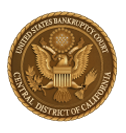9011-1: Signature Requirements; Types of Signatures Allowed; NEW Software-Generated Signatures
** UPDATED 04-14-2025 **
LBR 5005-1 requires that proper signatures and fees be included with documents that are delivered to the court for filing. This includes bankruptcy petitions and schedules AND amended schedules.
FRBP 9011 requires a signature to indicate the document being filed contains legal citations and factual assertions that have a reasonable basis in law and fact.
LBR 9011-1 governs the types of signatures that are authorized on documents that are to be filed. The Board of Judges approved updates to LBR 9011-1 that became effective on 10-21-2024.
A. A holographic signature is required in all of the following situations:
- The signature lines for all debtors on ALL CASE COMMENCEMENTS DOCUMENTS, including amended case commencement documents. This is a requirement whether the documents are to be filed via CM/ECF, filed via the ESR Program, or brought to an intake window at a court division. NOTE ABOUT ESR -- Debtors do not sign all signature spaces on a petition and some schedules. Instead, unrepresented debtors sign holographically an Electronic Filing Declaration, in addition to other statements that the court requires.
- All signatures of unrepresented parties on documents submitted via Electronic Drop Box (the EDB Program).
- All signatures of all parties to a motion, contested matter or adversary proceeding within a bankruptcy case, UNLESS the signature qualifies to be a software generated signature according to the procedures indicated in LBR 9011-1(b)(4).
- All signatures of all co-counsel and opposing counsel of the attorney whose CM/ECF login and password will be used to file the document.
- All signatures on any document brought to an intake window, even if the signature is for an attorney who has a CM/ECF login and password.
- All signatures on any document mailed to the court, even if the signature is for an attorney who has a CM/ECF login and password.
B. A /s/ notation is authorized in FOUR SCENARIOS ONLY:
- LBR 9011-1(b)(1) --- In the signature space of the person who uses the ePOC Program to file a proof of claim. The reason is the ePOC program is sponsored by the court and a trustee or debtor in possession has an opportunity to file an objection to the claim, including on the grounds that the claim was not filed properly.
- LBR 9011-1(b)(1) --- In the signature space for an attorney whose CM/ECF login and password will be used to file the document. The reason is the attorney's CM/ECF login and password constitute the "signature" of the attorney. An /s/ notation simply acknowledges that the login and password will be used.
- LBR 9011-1(b)(2) ---In the signature space of the person who "signs" the proof of service of the document that is being filed electronically AND also works in the office of the attorney whose CM/ECF login and password will be used to file the document. The reason is the attorney's CM/ECF login and password constitute the "signature" of the attorney. An /s/ notation simply acknowledges that the CM/ECF login and password of the filing attorney will be used to file the document.
- LBR 9011-1(b)(3) ---The person who "signs" the proof of service when the filing party is a bankruptcy trustee or an attorney who works for a government agency such as the U.S. Trustee, U.S. Attorney, State taxation authority, etc. AND the entity that performed the service is an Approved Bankruptcy Notice Provider on the website of the Administrative Office of U.S. Courts.
C. A "Software generated Signature" is allowed ONLY when all the following conditions are met:
- LBR 9011-1(b)(1) --- The document will be filed via CM/ECF
- LBR 9011-1(b)(4)(A) -- The signature service meets the robust safety standards
- LBR 9011-1(b)(4)(B) --- The person who will sign the documents provides ORAL VERIFICATION that a document may be filed in which their software generated signature is in a signature space in the document. The oral verification will be provided to the signer's attorney or the attorney who will file the document via CM/ECF.
- LBR 9011-1(b)(4)(B) --- The attorney who files the document via CM/ECF signs a "declaration of oral verification" to indicate that oral verification was obtained for all persons whose software generated signatures will be in a filed document.
- LBR 9011-1(d) --- The person whose software generated signature is filed LATER signs the document with a holographic signature and gives the signed page to their attorney or to the attorney who filed the document via CM/ECF
- LBR 9011-1(d) --- The attorney who has a duty to obtain a holographic signature on a filed document retains that holographically signed page for 5 years
The persons whose signature may be generated by a qualifying software signature provider are:
- The client of the attorney whose CM/ECF login and password will be used to file the document.
- The co-counsel of the attorney whose CM/ECF login and password will be used to file the document.
- The opposing counsel of the attorney whose CM/ECF login and password will be used to file the document.
- The client of the opposing counsel of the attorney whose CM/ECF login and password will be used to file the document.
- The signature line of an unrepresented party, when the jointly-prepared document is to be filed by an attorney whose CM/ECF login and password will be used to file the document.
NOTE: Per LBR 9011-1(b) (4)(A), the court was planning to obtain information from providers of software generated signatures so the court can post a list of providers who maintain robust safeguards, so that a list of qualifying provides will be posted here. However, the court decided it was not practical to post and maintain a list of providers. Thus, the court will edit LBR 9011-1(b)(4)(A) to remove this expectation.
